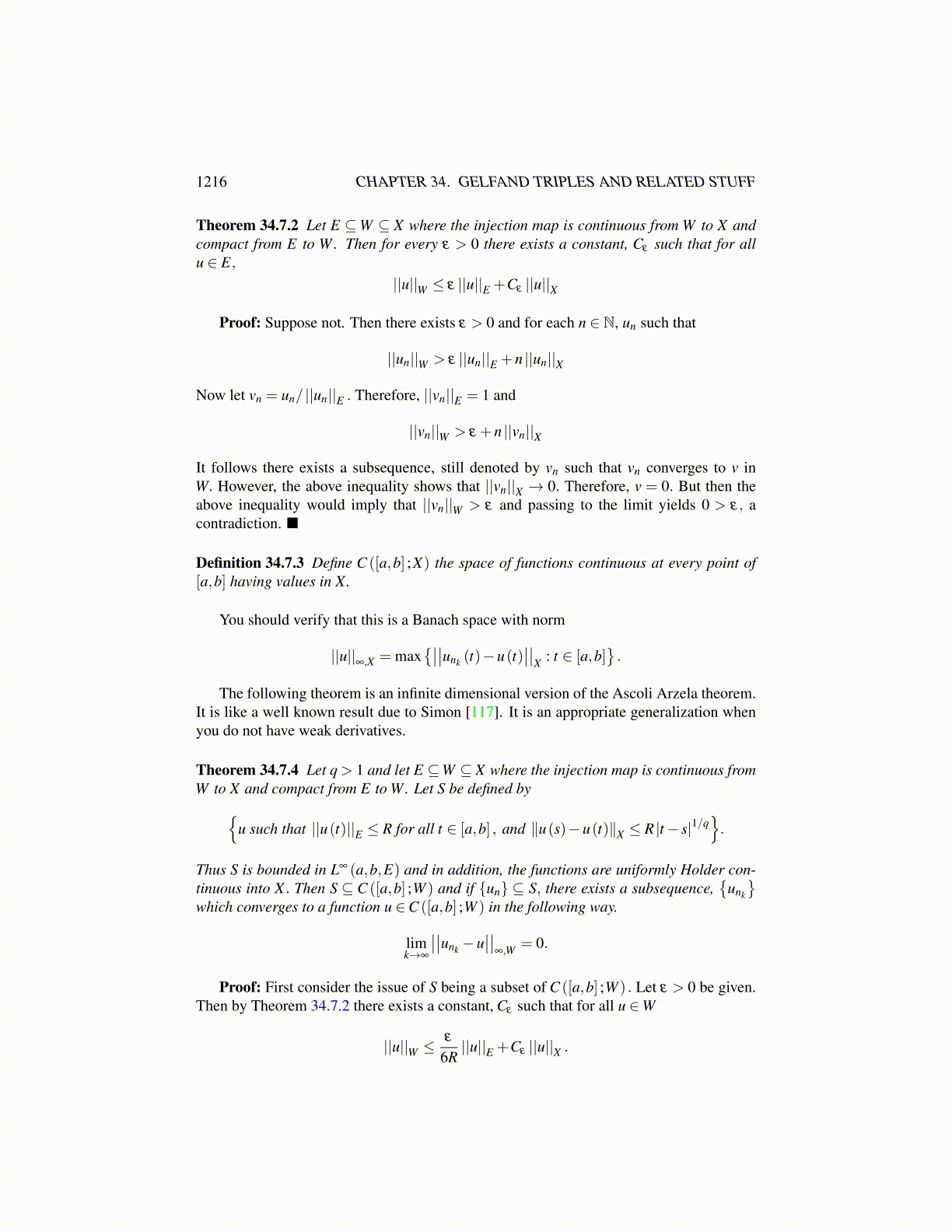
1216 CHAPTER 34. GELFAND TRIPLES AND RELATED STUFF
Theorem 34.7.2 Let E ⊆W ⊆ X where the injection map is continuous from W to X andcompact from E to W. Then for every ε > 0 there exists a constant, Cε such that for allu ∈ E,
||u||W ≤ ε ||u||E +Cε ||u||X
Proof: Suppose not. Then there exists ε > 0 and for each n ∈ N, un such that
||un||W > ε ||un||E +n ||un||X
Now let vn = un/ ||un||E . Therefore, ||vn||E = 1 and
||vn||W > ε +n ||vn||X
It follows there exists a subsequence, still denoted by vn such that vn converges to v inW. However, the above inequality shows that ||vn||X → 0. Therefore, v = 0. But then theabove inequality would imply that ||vn||W > ε and passing to the limit yields 0 > ε, acontradiction.
Definition 34.7.3 Define C ([a,b] ;X) the space of functions continuous at every point of[a,b] having values in X.
You should verify that this is a Banach space with norm
||u||∞,X = max
{∣∣∣∣unk (t)−u(t)∣∣∣∣
X : t ∈ [a,b]}.
The following theorem is an infinite dimensional version of the Ascoli Arzela theorem.It is like a well known result due to Simon [117]. It is an appropriate generalization whenyou do not have weak derivatives.
Theorem 34.7.4 Let q > 1 and let E ⊆W ⊆ X where the injection map is continuous fromW to X and compact from E to W. Let S be defined by{
u such that ||u(t)||E ≤ R for all t ∈ [a,b] , and ∥u(s)−u(t)∥X ≤ R |t− s|1/q}.
Thus S is bounded in L∞ (a,b,E) and in addition, the functions are uniformly Holder con-tinuous into X . Then S ⊆ C ([a,b] ;W ) and if {un} ⊆ S, there exists a subsequence,
{unk
}which converges to a function u ∈C ([a,b] ;W ) in the following way.
limk→∞
∣∣∣∣unk −u∣∣∣∣
∞,W = 0.
Proof: First consider the issue of S being a subset of C ([a,b] ;W ) . Let ε > 0 be given.Then by Theorem 34.7.2 there exists a constant, Cε such that for all u ∈W
||u||W ≤ε
6R||u||E +Cε ||u||X .